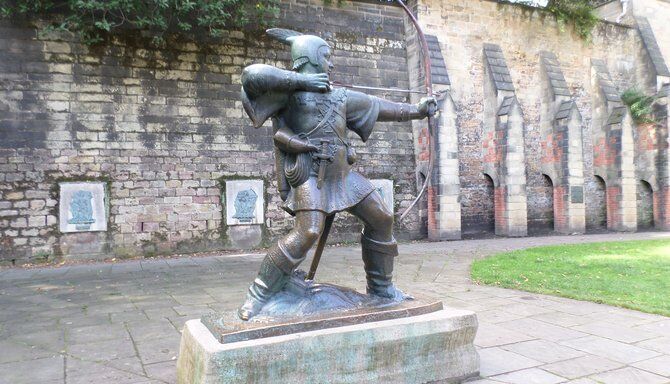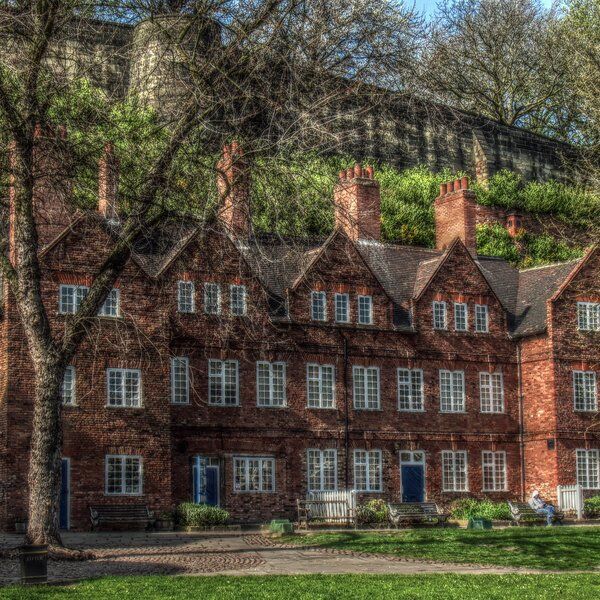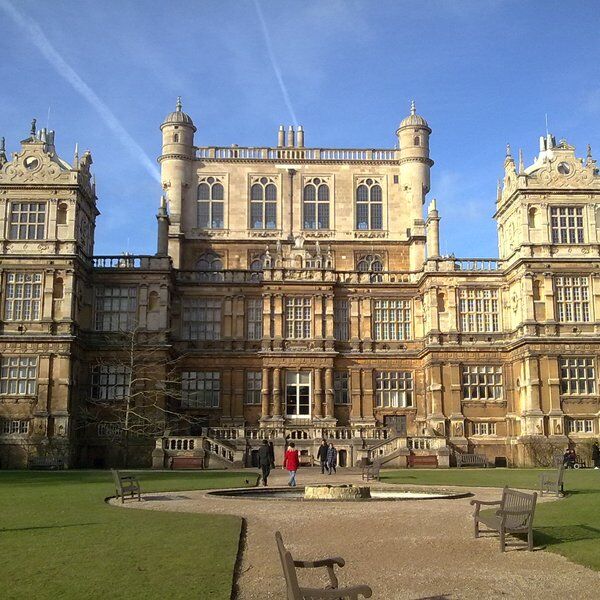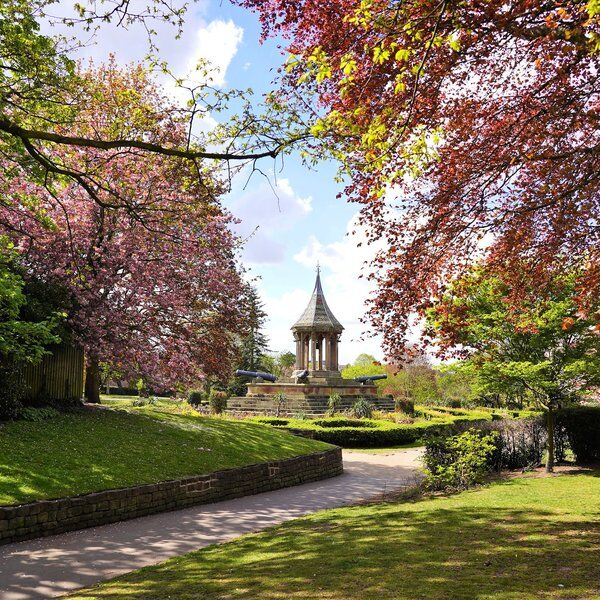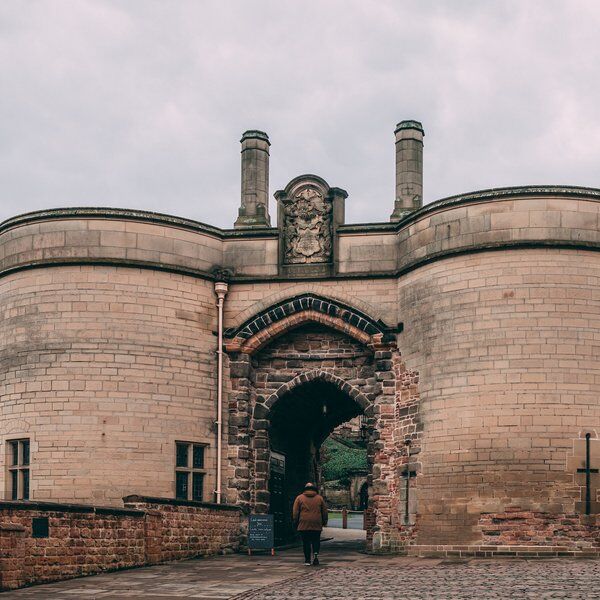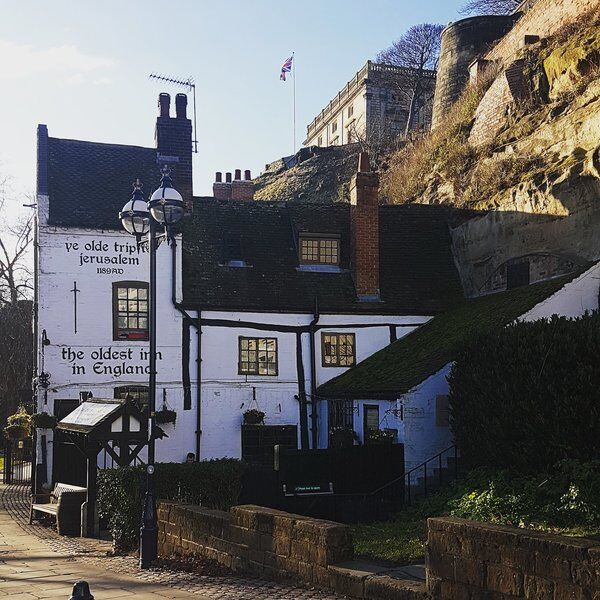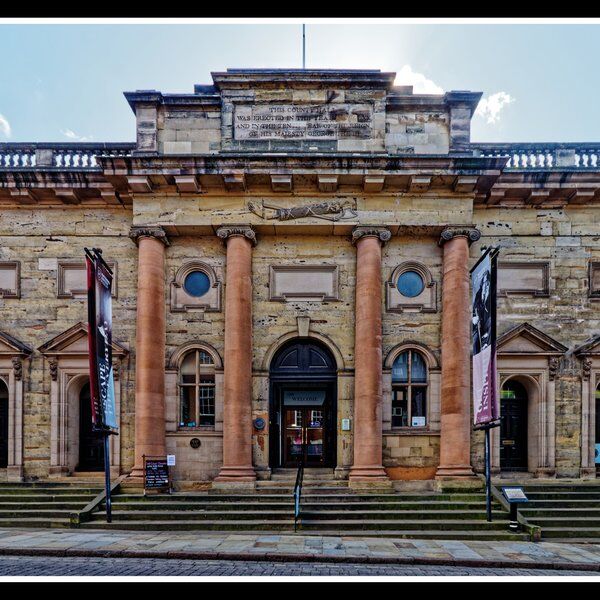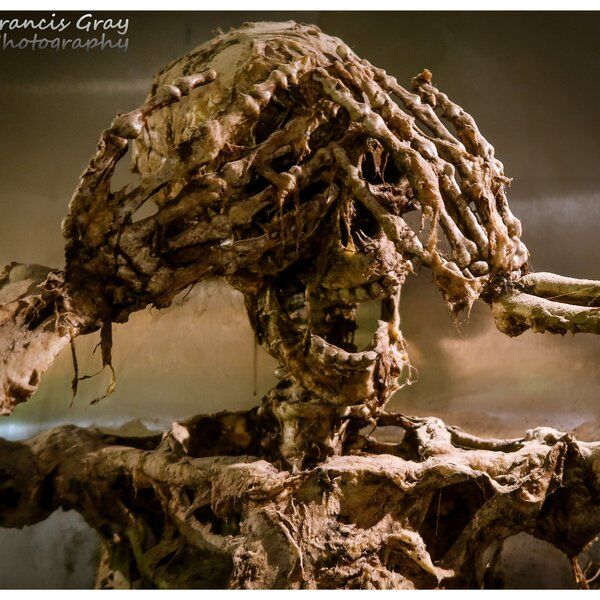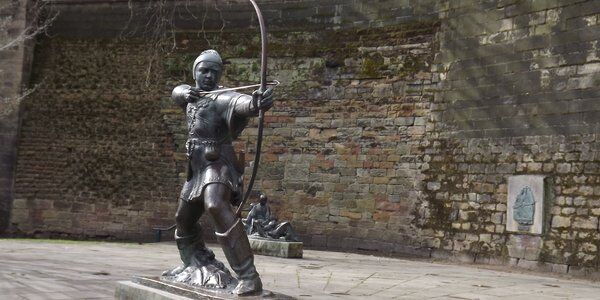
Discover the Robin Hood Statue
The iconic Robin Hood Statue in Nottingham represents the city's connection to the legendary outlaw. The 7-foot statue was created by a local artist named James Arthur Woodford RA, OBE, in 1952. Cast in eight pieces of bronze the hero is mounted on a stone plinth on Robin Hood's Lawn within the remnants of the mediaeval Nottingham Castle's moat and his bow is aimed towards the gatehouse.
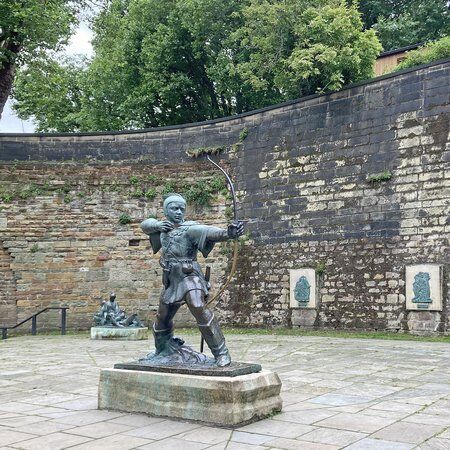
The statue was a gift to the city from businessman Philip EF Clay, who donated £5,000 for the statue's creation and its plaques. Clay's intention was to provide a focal point for visitors interested in Nottingham's ties to the legendary figure, and indeed, the statue has become a beloved landmark.
However, despite its enduring popularity, the statue has faced vandalism in recent years, with its bow suffering damage multiple times. Nonetheless, its cultural significance has been recognized with a Grade II listed status by Historic England, solidifying its place in Nottingham's heritage. Nottingham Castle, after a £30m renovation, provides an immersive experience for visitors to delve into Robin Hood's adventures.
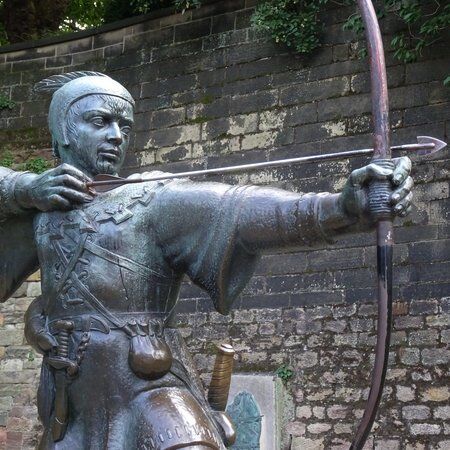
About the Sculptor of the Robin Hood Statue
James Woodford was born to a lace designer and honed his craft at the Nottingham School of Art before serving in World War I, with the 11th Sherwood Foresters. Following the war, he continued his artistic pursuits, attending the Nottingham School of Art from 1919 to 1920. With the assistance of an ex-Servicemen's grant, he furthered his studies at the prestigious Royal College of Art from 1920 to 1921.

In 1922, Woodford's talent was recognised with the prestigious Prix de Rome in sculpture, catapulting him into the spotlight of the art world. A crowning achievement came in 1953 when he was commissioned to create ten towering 'Queen's Beasts' sculptures to line the approach to Westminster Abbey, for the Coronation of Queen Elizabeth II. This prestigious project solidified Woodford's legacy as one of Britain's foremost sculptors.
Woodford's varied body of work, ranging from the Robin Hood Statue in Nottingham to the regal Queen's Beasts sculptures, reflects his versatility and influence on the art world both locally in Nottingham and elsewhere in England.
The Legend of Robin Hood
Okay so we can bang on about Robin Hood and his statue all we want but that’s not very helpful if you don’t actually know who he is, or rather, was. According to English folklore, Hood lived during the reign of King Richard the Lionheart in the late 13th century, amidst the forests of Sherwood in Nottinghamshire.
In these tales he is depicted as an exceptional archer, who with his band of Merry Men including Little John, Friar Tuck, and his beloved Maid Marian, defied the oppressive Sheriff of Nottingham, ‘Bad’ King John, and corrupt nobility by robbing from the rich and giving to the poor.

Hood’s legend gained popularity during the Middle Ages, embraced by Tudors, particularly King Henry VIII. Although the name Robin Hood appeared in manuscripts around the late 1400s, references to the outlaw can be found even earlier. In William Langland's 1377 work, "The Vision of Piers the Plowman," Robin Hood is mentioned, indicating his early cultural significance.
Since the tales were first told, Robin Hood has worn many names and identities, from Robin of Loxley to Robehod, with various interpretations and across different regions. Whether defending the Earl of Lancaster or aiding Saxon revolts against Norman overlords, his legend transcends geographical boundaries, with theories placing him in Nottingham, Berkshire, Leicestershire, and beyond.
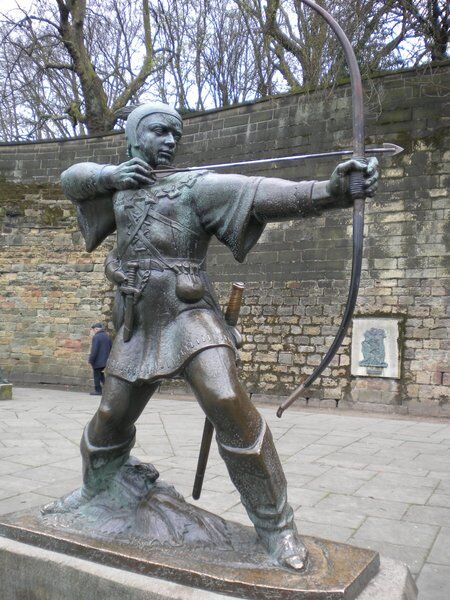
While the historical existence of Robin Hood remains highly debated, although it seems likely he may well have been a real nobleman from Loxley born around 1160, his legend has endured for centuries. It has also inspired countless stories, ballads, and adaptations across literature, film, and popular culture. Hollywood's interpretations, notably the 2018 film, adopted a darker portrayal, departing from traditional depictions.
The Robin Hood Statue
Certain landmarks in Nottingham have always memorialised Robin Hood’s legend. For example, Sherwood Forest has the 23-tonne Major Oak, believed to be over 1,000 years old and reputedly Robin Hood's hideout. And on July 24, 1955, to commemorate a visit to Nottingham by Queen Elizabeth and the Duke of Edinburgh, the Duchess of Portland unveiled another ode to the heroic bandit with the iconic Robin Hood Statue outside Nottingham Castle.
Woodford's attention to detail, consulting historians to capture a mediaeval forester's appearance, contributed to the statue's authenticity. However, the inclusion of a leather skull cap instead of the iconic triangular hat sparked controversy, with some expecting the latter due to cinematic portrayals.
Efforts to preserve the statue have included reinforced arrows and protective measures during events like English Defence League matches. Despite numerous attempts to relocate it, public consensus supports its accessibility. Its global recognition is evidenced by appearances in prominent newspapers and even a feature in Penthouse magazine.

Interested in finding more places like this? Try one of our Treasure Trails in Nottingham - untangle cryptic clues as a team, as you are taken on a journey to the most unique, unusual and bizarre corners of York.
